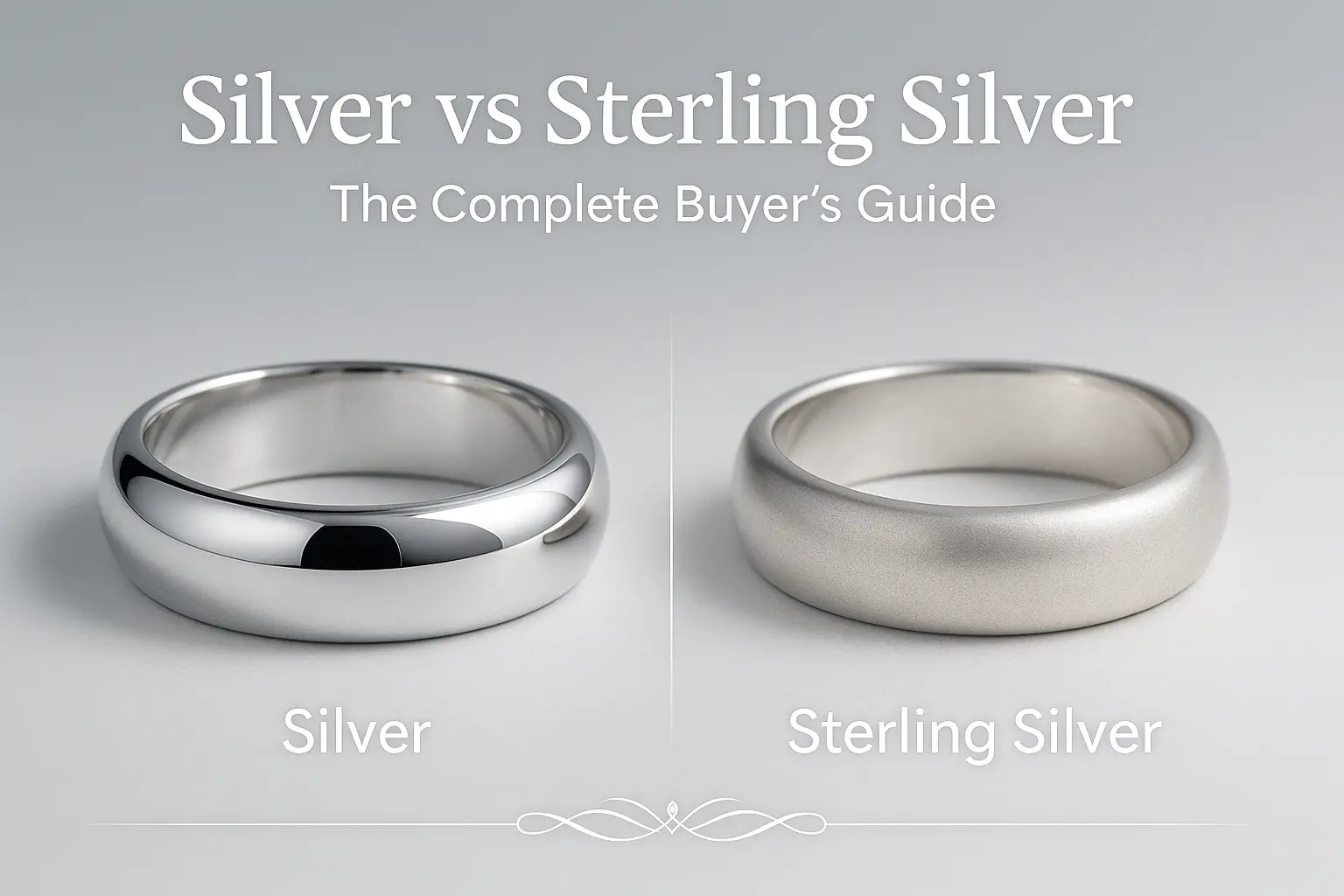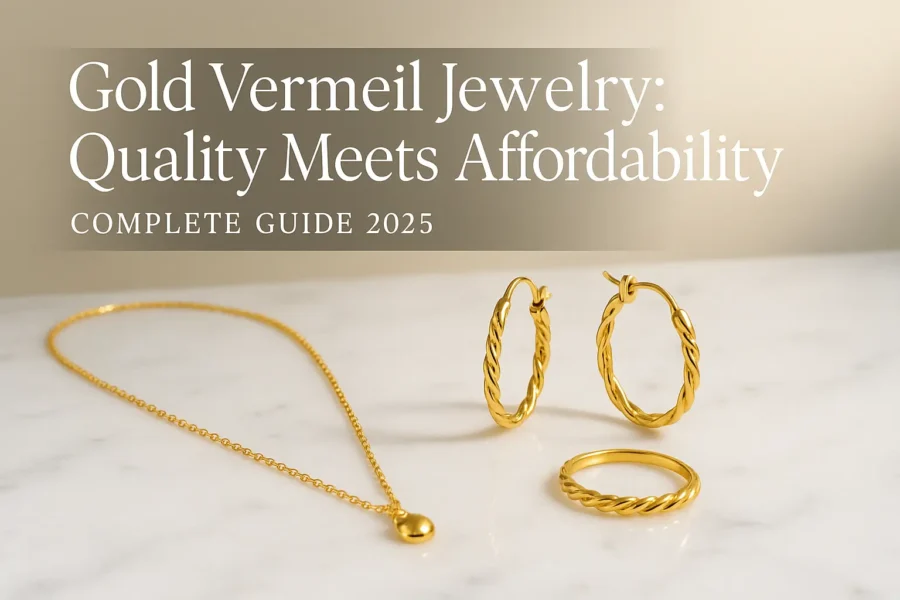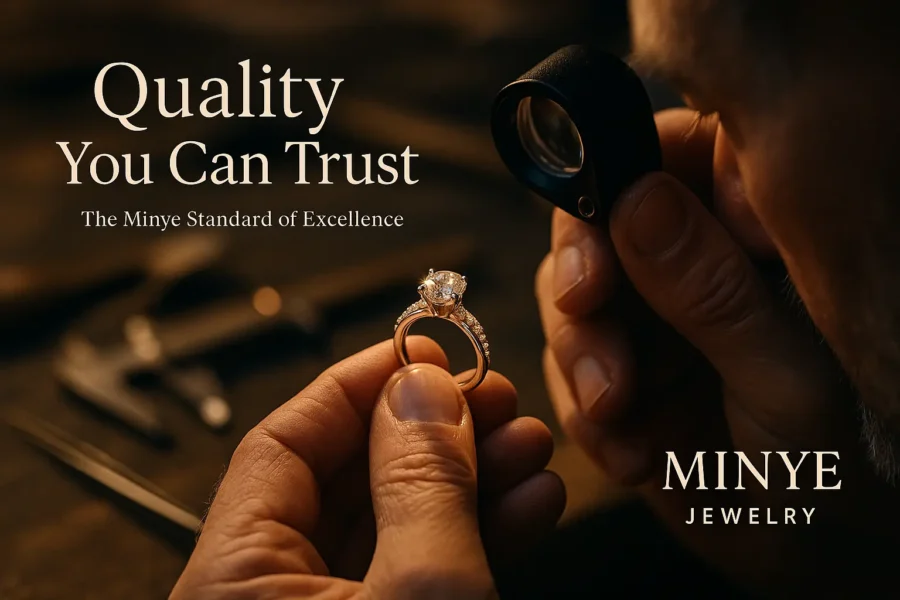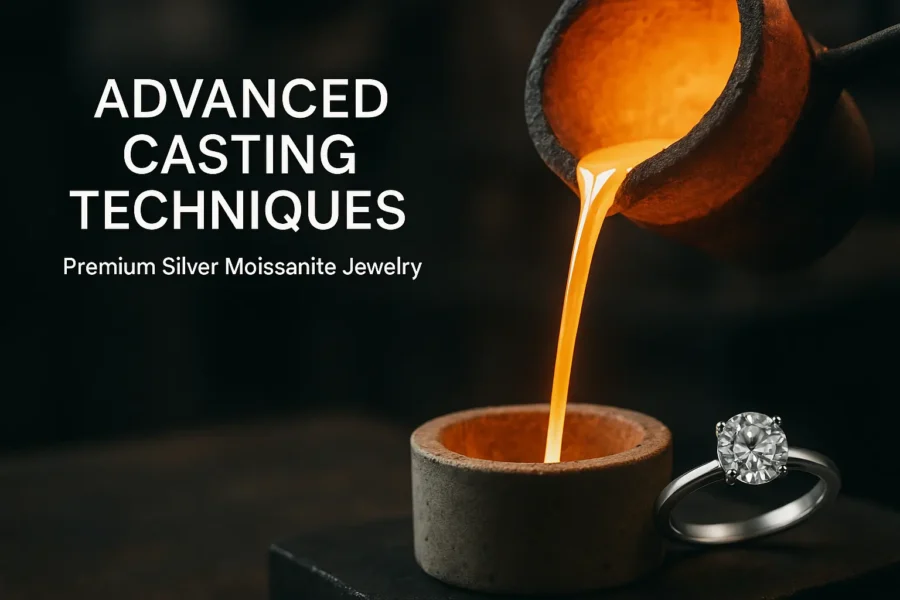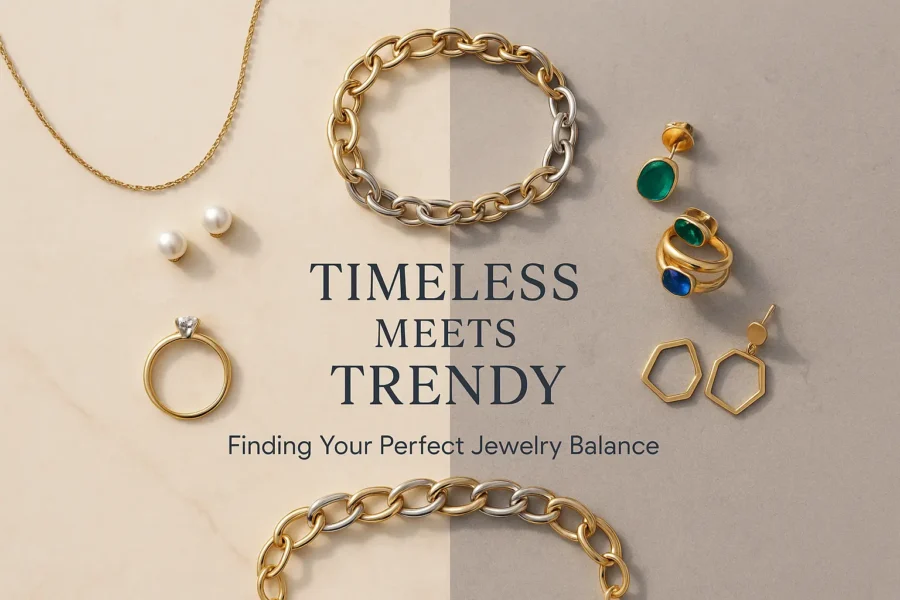When shopping for silver jewelry, you’ve probably encountered terms like “pure silver” and “sterling silver” without fully understanding the difference. Many people assume all silver is created equal, but choosing between these two options can significantly impact your jewelry’s durability, appearance, and value.
Whether you’re investing in a statement necklace or selecting everyday earrings, understanding these distinctions will help you make an informed decision that matches your lifestyle and budget.
What is Pure Silver?
Pure silver, also known as fine silver, contains 99.9% silver content with minimal trace elements. This precious metal boasts an incredibly bright, white luster that’s instantly recognizable. However, pure silver’s beauty comes with significant drawbacks that make it impractical for most jewelry applications.
The primary issue with pure silver lies in its softness. On the Mohs hardness scale, pure silver rates only 2.5-3, making it extremely malleable and prone to scratches, dents, and deformation. While this malleability makes pure silver excellent for crafting intricate designs, it means your jewelry won’t maintain its shape with regular wear.
Pure silver also carries a premium price tag due to its high silver content, making it a costly choice for everyday pieces. You’ll typically find pure silver used in specialized applications like coins, bullion, or ceremonial items rather than daily-wear jewelry.
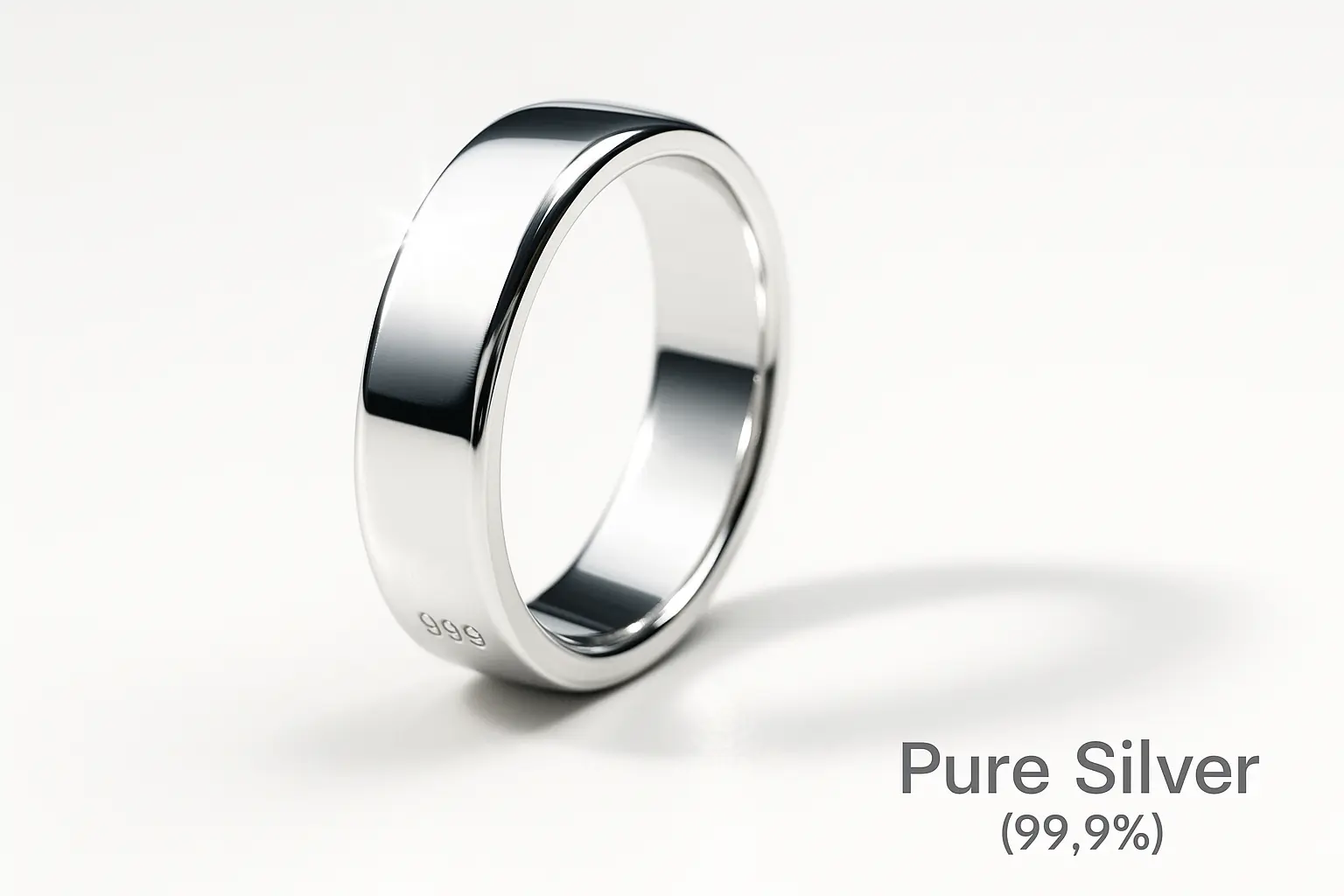
Sterling Silver: The Jewelry Standard
Sterling silver represents the gold standard for silver jewelry, containing 92.5% pure silver mixed with 7.5% other metals, usually copper. This specific composition isn’t arbitrary – it’s been refined over centuries to create the perfect balance between beauty and functionality.
The addition of copper and other alloys transforms soft pure silver into a durable metal suitable for intricate jewelry designs. This 92.5% silver content is marked with a “925” hallmark, which you’ll find stamped on quality sterling silver pieces as a guarantee of authenticity.
The sterling silver standard originated in medieval England and has remained consistent worldwide, ensuring that sterling silver jewelry meets the same quality expectations regardless of where it’s crafted.
Key Differences: Pure Silver vs Sterling Silver
Durability and Strength
Sterling silver wins decisively in the durability category. The copper alloy increases hardness from pure silver’s 2.5-3 to approximately 3.5-4 on the Mohs scale. This enhanced strength means sterling silver jewelry maintains its shape, resists scratches better, and withstands daily wear without significant damage.
Pure silver’s softness makes it unsuitable for rings, bracelets, or any jewelry subject to regular contact and pressure. Even gentle handling can leave permanent marks on pure silver pieces.
Tarnish Resistance
Both metals will tarnish when exposed to sulfur compounds in the air, but they behave differently. Pure silver tarnishes more slowly due to its higher silver content, but when it does tarnish, the process can be more noticeable due to the contrast with its bright finish.
Sterling silver tarnishes more readily because of the copper content, but this tarnishing is often more even and manageable. Many people actually prefer the slightly aged patina that develops on sterling silver over time.
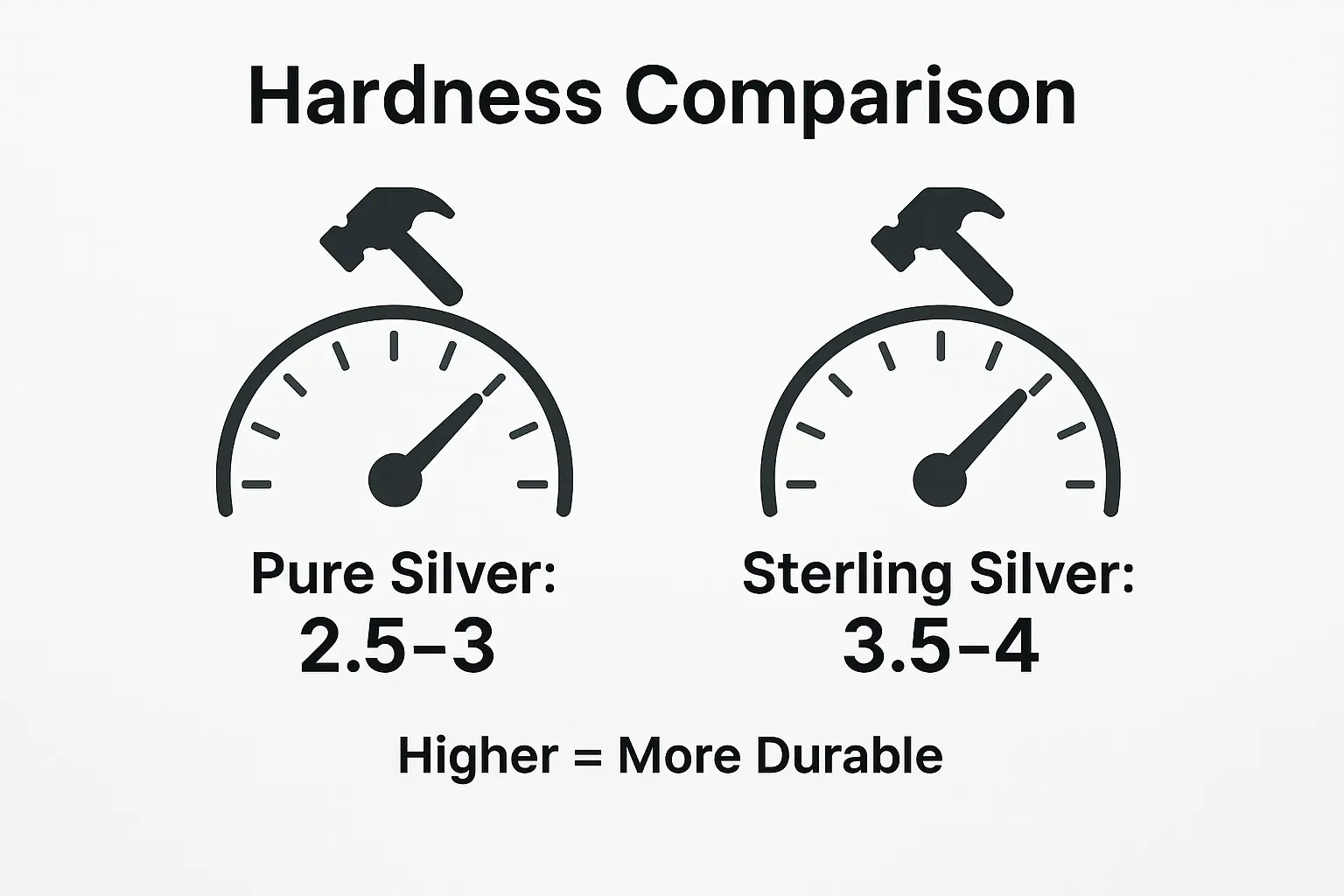
Cost Considerations
Sterling silver offers exceptional value for jewelry buyers. The 7.5% alloy content significantly reduces the price compared to pure silver while delivering superior performance for jewelry applications. This cost efficiency makes sterling silver accessible for building a complete jewelry collection without breaking the budget.
Pure silver’s higher material cost, combined with its limited practical applications, makes it a premium choice that’s often reserved for special occasions or investment pieces.
Appearance and Finish
Pure silver exhibits the brightest, most reflective white metallic finish possible. Its surface is mirror-like when polished, creating an unmistakable luminous quality.
Sterling silver maintains an excellent bright finish that’s virtually indistinguishable from pure silver to the casual observer. The slight difference in reflectivity is negligible in most lighting conditions, making sterling silver an excellent choice for those who want the silver look without pure silver’s limitations.
Pros and Cons Analysis
Pure Silver Advantages:
- Maximum hypoallergenic properties: With 99.9% silver content, pure silver rarely causes skin reactions
- Brightest possible finish: Unmatched reflective quality and luster
- Investment value: Higher intrinsic metal value for collectors
Pure Silver Disadvantages:
- Extremely soft: Prone to scratches, dents, and shape changes
- Higher cost: Premium pricing due to high silver content
- Impractical for daily wear: Requires careful handling and storage
- Limited design options: Softness restricts complex jewelry designs
Sterling Silver Advantages:
- Exceptional durability: Perfect balance of beauty and strength
- Affordable luxury: High-quality appearance at accessible prices
- Versatile design potential: Strong enough for intricate jewelry styles
- Easy maintenance: Responds well to standard silver cleaning methods
- Wide availability: Industry standard ensures consistent quality
Sterling Silver Disadvantages:
- Tarnishing tendency: Requires regular cleaning to maintain brightness
- Potential allergies: Copper content may cause reactions in sensitive individuals
- Slightly less pure: Lower silver content than pure silver options
Which Should You Choose?
For Everyday Jewelry: Sterling Silver
Sterling silver is the clear winner for daily-wear pieces like rings, bracelets, necklaces, and earrings. Its durability ensures your jewelry maintains its beauty through regular use, while the cost efficiency allows you to build a versatile collection.
At Minye Jewelry, we specialize in sterling silver pieces that combine exceptional craftsmanship with practical durability, ensuring your investment provides years of enjoyment.
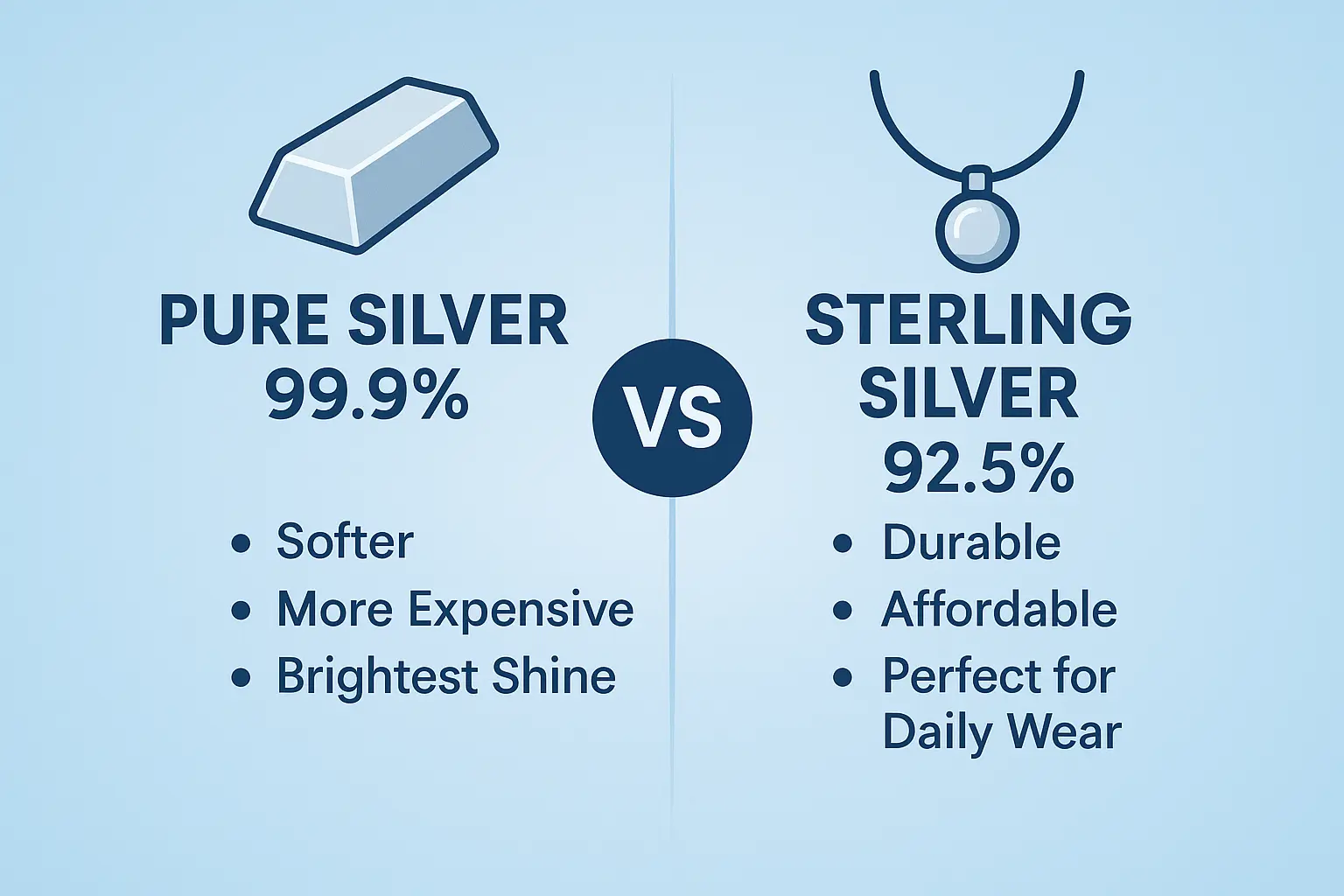
For Investment or Collector Pieces: Consider Pure Silver
If you’re purchasing silver primarily for investment purposes or collecting rare pieces, pure silver’s higher metal content may justify the additional cost. However, remember that pure silver jewelry requires careful handling and storage.
For Sensitive Skin: Both Options Work
While pure silver is theoretically more hypoallergenic, high-quality sterling silver rarely causes skin reactions. If you have severe metal sensitivities, test sterling silver first – many people with sensitive skin wear sterling silver without issues.
The key factors to consider include:
- Intended use frequency: Daily wear favors sterling silver
- Budget constraints: Sterling silver offers better value
- Maintenance preferences: Both require care, but sterling silver is more forgiving
- Design complexity: Intricate designs require sterling silver’s strength
Care and Maintenance Tips
Proper care extends the life and beauty of both silver types:
Storage Methods
Store silver jewelry in anti-tarnish pouches or lined jewelry boxes. Keep pieces separated to prevent scratching, and include anti-tarnish strips in storage areas to slow oxidation.
Cleaning Techniques
For both silver types, use gentle silver polish or create a mild solution with warm water and dish soap. Avoid harsh chemicals or abrasive materials that can scratch the surface. A soft-bristled toothbrush works well for detailed cleaning around stones or textured areas.
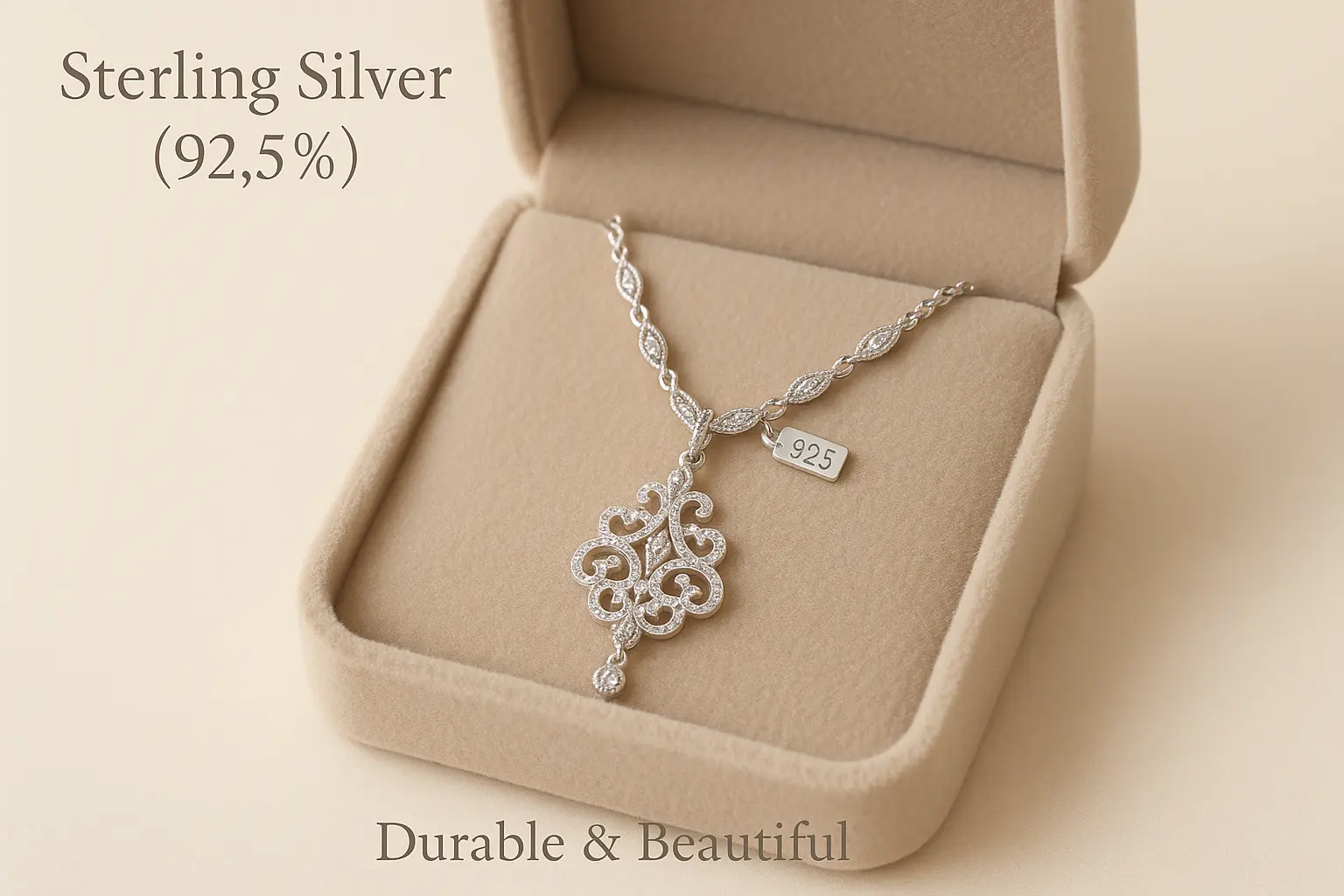
Prevention Tips
Wear your silver jewelry regularly – the natural oils from your skin help prevent tarnishing. Remove jewelry before swimming, showering, or applying lotions and perfumes, as chemicals accelerate tarnishing.
Conclusion
Sterling silver emerges as the superior choice for most jewelry applications, offering the perfect combination of beauty, durability, and value. While pure silver boasts higher silver content and maximum brightness, its impractical softness and premium cost make it unsuitable for everyday jewelry.
Sterling silver’s time-tested 92.5% composition provides the silver aesthetic you desire with the strength needed for lasting beauty. Whether you’re selecting your first silver piece or expanding an existing collection, sterling silver delivers exceptional performance at an accessible price point.
Ready to explore the beauty of sterling silver jewelry? Browse Minye Jewelry’s carefully curated collection of sterling silver pieces, where quality craftsmanship meets timeless design to create jewelry that’s built to last.


